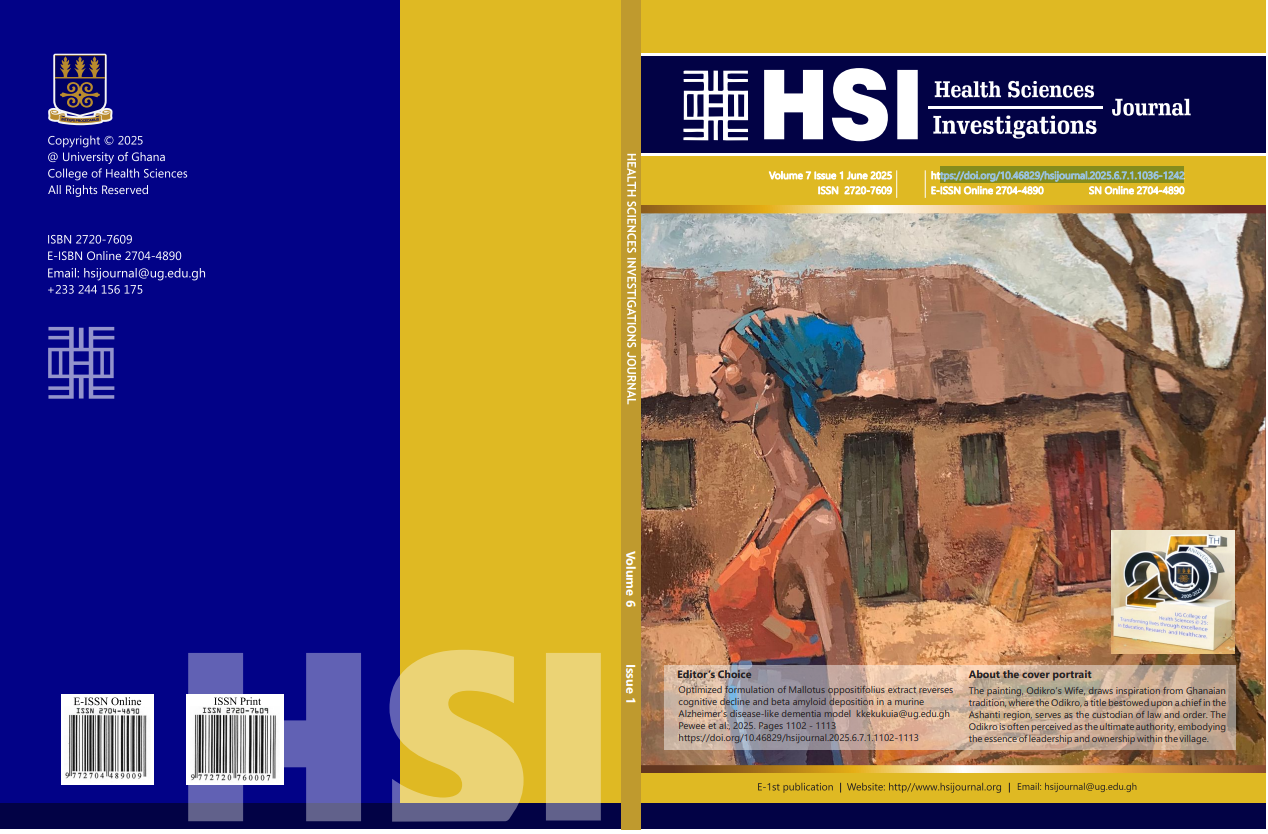High antibiotic resistance and elevated plasma IFNγ from type 2 diabetes mellitus (T2DM) patients with uropathogens visiting Cape Coast Teaching Hospital
High antibiotic resistance and elevated plasma IFNγ from type 2 diabetes mellitus patients
Abstract
Background: Diabetes mellitus (DM) is a polygenic metabolic disorder characterised by persistent elevated plasma glucose levels, which can lead to a range of complications, including an increased susceptibility to infections such as urinary tract infections (UTIs). Studies have shown that DM significantly increases the incidence of UTIs, and this is primarily due to a weakened immune system and the presence of glucosuria.
Objective: The study aimed to determine cytokine profiles in the peripheral blood, identify common uropathogens and analyse their antibiotic susceptibility patterns in DM patients reporting for treatment at Cape Coast Teaching Hospital (CCTH).
Methods: In a prospective study design, midstream urine and peripheral blood samples were collected from 202 known Type 2 diabetic patients recruited for the study. Using standard bacteriological methods, uropathogens were isolated and identified, and antibiogram testing was performed using the Kirby–Bauer disk diffusion method. Plasma concentrations of IL1β, IL6, IL10, IL17, IFNγ, and TNF-α cytokines were measured using an ELISA kit.
Results: This study recorded a 43.1% prevalence of UTIs among diabetic patients, with the main uropathogens identified as Escherichia coli (18.8%), Citrobacter spp. (11.4%), and Enterobacter spp. (5.4%). The study also observed a high level of antibiotic resistance among the uropathogens, particularly to widely used broad-spectrum antibiotics such as Nalidixic Acid, Cefuroxime, Aztreonam, Cefotaxime, Ceftriaxone, Ceftazidime, Cefixime, and Cefdinir. There were significantly higher levels of IFNγ among the diabetic patients with UTI, but there were no significant changes in the levels of IL1β, IL6, IL10, IL17 and TNF-α cytokines among the diabetes patients with or without uropathogens.
Conclusion: Our findings suggest that patients with diabetes have frequent UTIs, and the isolated uropathogens were highly resistant to antibiotics. Again, there were higher levels of pro-inflammatory cytokine IFNγ in diabetic patients with UTI. Our findings suggest that patients with diabetes experience frequent UTIs, and the isolated uropathogens show high levels of resistance to antibiotics. Additionally, we observed higher levels of the pro-inflammatory cytokine IFN-γ in diabetic patients with UTI. This elevated cytokine level could play a role in the immune response to infections and may serve as a potential biomarker for identifying UTIs in type 2 diabetic patients. The combination of frequent UTIs and antibiotic resistance highlights the need for improved management strategies and targeted therapies in this population.


